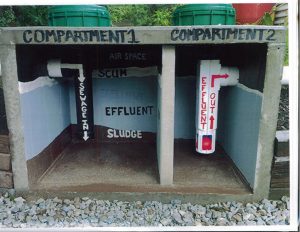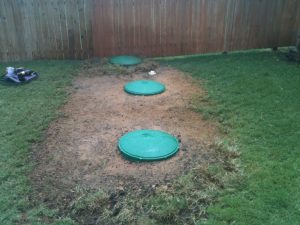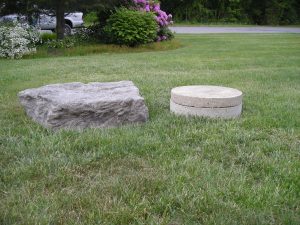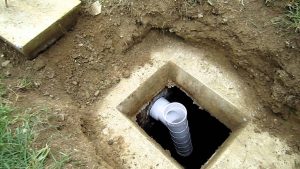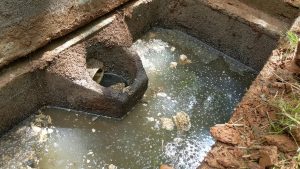Operation & Maintenance (O&M) Program
Types of Sewage Treatment Systems in Darke County
Leachfield Sewage Treatment Systems
Aeration Sewage Treatment Systems
Sandfilter Sewage Treatment Systems
Mound Sewage Treatment Systems
NPDES Sewage Treatment Systems
Other Sewage Treatment Systems
Diagram of a Septic Tank
Examples of Risers
Examples of Baffles
Why the Operation and Maintenance (O&M) Program matters
Over the past couple of years, many Ohio counties have implemented a sewage Operation and Maintenance (O&M) program for septic systems. This program is intended to help reduce pollution and save homeowner money by preventing septic system failures. This is done through homeowner education and system monitoring and maintenance. This program will assure that all existing systems, no matter the type or how old they are, are being maintained properly to improve system performance and reduce nuisances.
Because of failing septic systems and impermeable clay soils, Ohio passed new sewage rules that became effective January, 2015 (OAC 3701-29). Ohio’s sewage rules were not updated since 1977 and enforcement somewhat varied from county to county so it was necessary for Ohio to pass a standard set of rules. These rules mandated an O&M program for local Health Departments and encouraged the existence of continuing programs. Therefore, every homeowner in the state of Ohio is required by law to have an Operation Permit to operate their sewage treatment system (OAC 3701-29-09(I)).
Homeowners are basically running their own wastewater treatment plant in their backyards, so it is important that they understand the process. In many cases the septic tank is buried and often not thought about. A simple step like putting risers on the tank reminds the homeowner to check the effluent levels, baffle and tank condition, and have it pumped out every 3 to 5 years.
Many homeowners do not know what type of septic system they have, how to monitor the system, or what components may need attention. Unfortunately, 58% of Darke County homeowners do not have an adequate system causing over 2 million gallons of wastewater discharging daily into our local streams and rivers. Some systems have been illegally tied into drainage tiles and others have failed with sewage found surfacing above the ground. This is a public health risk and makes O&M necessary. A healthy system keeps our groundwater safe, prevents pollution of sewage to our surface waters, and helps protect public health!
Another benefit of the O& M program is to help the homeowner if they go to sell their property or if they are looking to purchase a property. The program keeps records from service providers, installers, and septic pumpers on the maintenance performed. All septic systems typically have a lifespan of 20 to 30 years just like most of your home roofs and are a big financial investment. It is important that homeowners are aware of what they are purchasing and how to keep their system operating effectively and efficiently to ensure a longer life.
The O&M permit fee covers the Health Department costs to run the program and the health department is not allowed to charge more than it costs to implement the program. The fees cover the costs of helping to educate the homeowner, record keeping, and field visits.
Homeowners have the option of hiring a service provider to perform their inspection if they don’t wish for the Health Department to do so. The reduced permit fee will still cover the cost of maintenance record keeping. Ohio Administrative Code Section 3701-29-23(A) states “The Board of Health may at any reasonable time inspect any sewage treatment system, part thereof, or proposed STS site, to conduct sampling, collect data, or perform other activities necessary to assure compliance with this chapter.” Therefore, the health department will inspect without a service provider contract.

